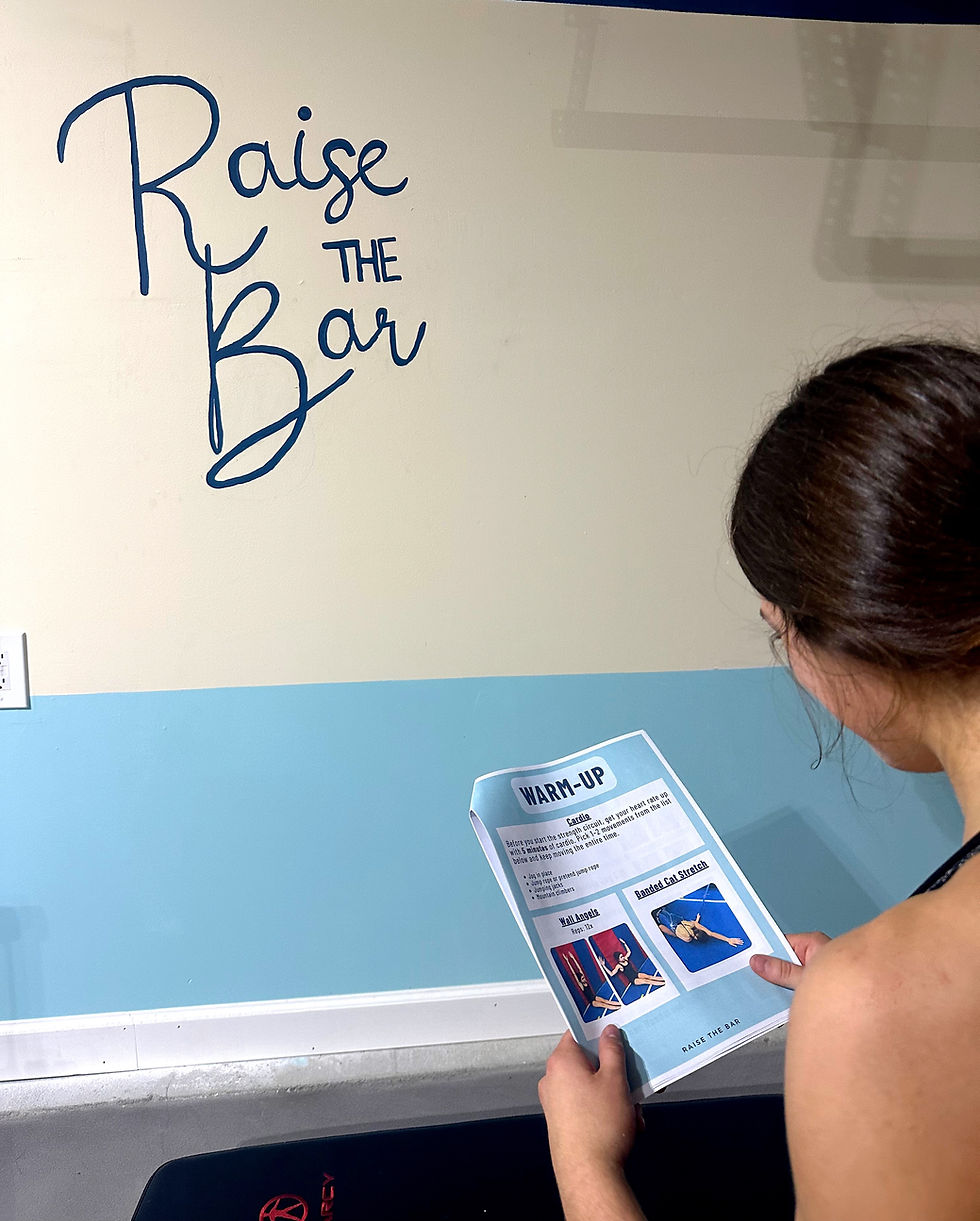Conditioning Before or After Gymnastics Practice? What Research and Coaching Experience Say
- raisethebargymnast

- Nov 4
- 3 min read
As coaches, we often argue: should conditioning go at the start of practice when everyone is fresh, or at the end, after skill work and routines? From what I’ve read — and what I’ve seen — there’s no one-size-fits-all answer. What matters most is how you do it, why you’re doing it, and what your athletes need. Here’s how I break it down, with research backing things up, and how I’ve applied it in my gym.
What the Research Says
HIIT & Technical Accuracy Under Fatigue
A recent study in youth athletes found that performing high-intensity interval training (HIIT) before skill-work resulted in greater improvements in technical accuracy under fatigue (e.g., passing, dribbling, shooting) compared to HIIT placed afterwards. Journal of Sports Science and Medicine+1
Interpretation for gymnastics: If conditioning comes first, athletes may be more challenged when moving into skill work under fatigue—this could lead to better adaptation (i.e., learning to perform when tired).
Warm-Up Effects on Explosive Performance
A systematic review found that dynamic warm-ups (which often include conditioning-like elements) significantly improved sprint, jump, and agility performance—especially when the warm-up intensity increased and matched upcoming tasks. Lippincott Journals+1Importantly: if there’s a long break after warm-up or conditioning before skill work, a brief re-warm-up or activation is helpful to “re-activate” muscles. MDPI+1
Takeaway for gymnastics: Light conditioning as part of warm-up is helpful up front; leaving a long pause between warm-up/conditioning and skill work is risky unless you re-activate.
Static vs. Dynamic Stretching / Warm-Up
Research continues to show that static stretching before maximal strength or explosive work tends to reduce immediate power output; dynamic warm-ups or active movements are generally better at preserving or boosting performance. PMC+1
Implication for your gym: If conditioning is done before skill work, prioritize active/dynamic movements rather than long static holds—especially for young or optional-level gymnasts.
What Coaches & “Real Life” Show
From running gymnastics practices, here are things I’ve observed and tried:
When conditioning is done before skills, you sometimes see more sloppy technique in the early part of skill work—especially when fatigue kicks in. But that “sloppiness” can become a learning tool: showing where strength or endurance needs work, or where mental focus is failing.
Putting conditioning after skill work preserves skill quality: athletes are fresh, drill reps tend to be cleaner, and you’re less likely to reinforce bad form. The trade-off: sometimes conditioning becomes less of a priority or gets cut short at the end because time is running out or energy is low.
Athlete mindset matters. If athletes expect conditioning to be after, they might give less effort up front or mentally check out during skill work, anticipating the grind. On the flip side, starting with conditioning sometimes gives practice a more “kick-off” energy.
My Take: What Works Best for Gymnastics Conditioning (Especially for Optional-Level Gymnasts)
Here’s what I’ve settled on (after experimenting, messing up, fixing, etc.):
Best when conditioning is before skill work if your goal is to build endurance/capacity/mental toughness. It helps them learn to maintain skill quality under fatigue, which is important in competitions and routines.
Best when conditioning is after skill work if your priority is skill precision — dance, tumbling, handstands, beam confidence. Let them do their drills when fresh so you’re reinforcing the right mechanics.
Hybrid approach often hits the sweet spot:
Warm-up + activation
Skill work / routines
Conditioning (end)
Occasionally flip it: when preparing for competition where fatigue will matter, do heavier conditioning earlier to simulate that experience.
Always build in recovery/cool-down. No matter when conditioning happens, wrap up with good flexibility/alignment/mental tuning. Helps reduce soreness, restores readiness for next day.
Final Thoughts
Starting a gymnastics conditioning schedule doesn’t have to feel overwhelming or rigid. By understanding when and why you place conditioning, you give yourself flexibility—and you give the athletes a smarter, more sustainable approach. If you focus on purpose, progress, and mindset, you’ll find what works best for your team and culture.
Sources
Fradkin, A. J., Zazryn, T. R., & Smoliga, J. M. (2010). Effects of Warming-Up on Physical Performance: A Systematic Review With Meta-Analysis. Journal of Strength & Conditioning Research, 24(1), 140-148. Lippincott Journals+1
Engel, F. A. (2018). High-Intensity Interval Training Performed by Young Athletes. Frontiers in Physiology. Frontiers+1
He, X., et al. (2025). Does The Timing of High-Intensity Interval Training Affect Technical Accuracy Under Fatigue in Youth Athletes? Journal of Sports Science & Medicine. Journal of Sports Science and Medicine
(Additional warm-up timing research): Eg. research on re-warm-up strategies between resistance training sets. MDPI

Comments